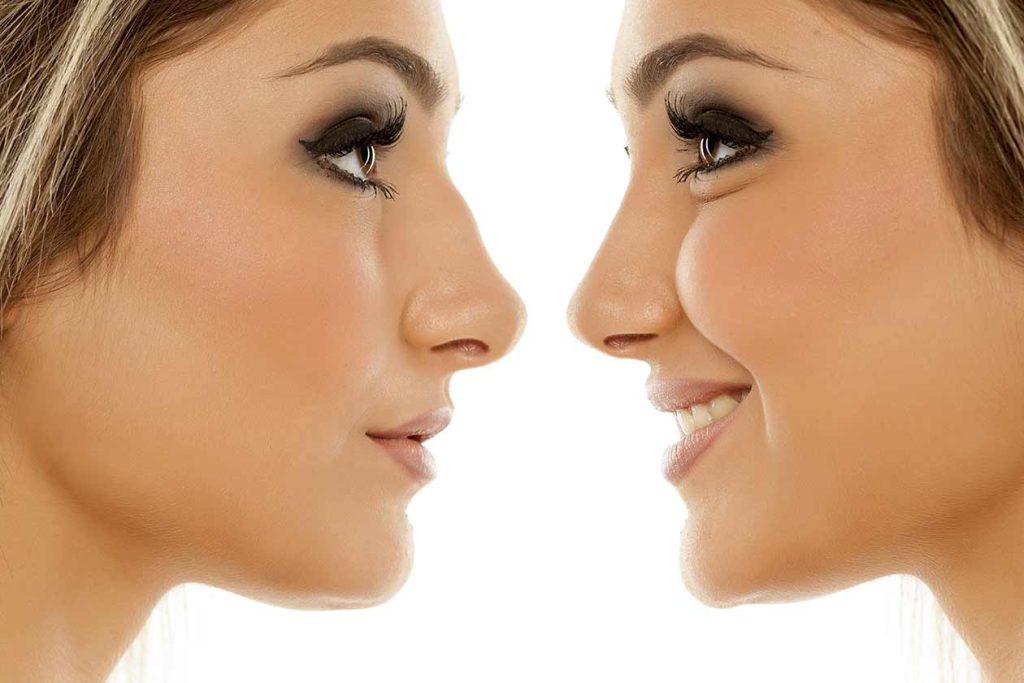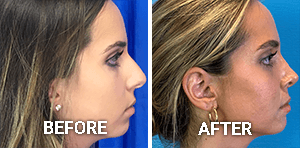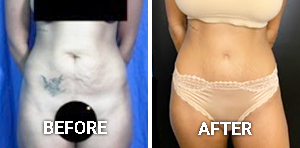Middle Eastern Ethnic Rhinoplasty
Conveniently located to serve the areas of Beverly Hills and Greater Los Angeles

Rhinoplasty for patients of Middle Eastern descent is a form of ethnic rhinoplasty that is tailored to their unique nasal anatomy and aesthetics. The term ethnic rhinoplasty is used to refer to a rhinoplasty that is performed on patients that are not Caucasian. This surgery improves both the appearance and function of the nose while maintaining features that are unique to their heritage.
Dr. Michael Omidi is considered one of the top rhinoplasty surgeons in Beverly Hills and Los Angeles with double-board certification in facial plastic surgery. Dr. Omidi performs complex rhinoplasties and many revision rhinoplasties from other surgeons. He believes that to attain the best rhinoplasty procedure the surgeon must be an expert not only by training but also by the volume of rhinoplasty cases performed. If you’ve been considering a rhinoplasty that is tailored to your unique features, call (310) 281-0155 to schedule an appointment at Dr. Omidi’s offices in Beverly Hills.
Contents
About Ethnic Rhinoplasty
Ethnic rhinoplasty can be tailored to patients of Middle Eastern, African-American, Asian or Hispanic descent. No patient can be categorized exactly in any one group as every patient has unique needs. However, different ethnicities often share similar aesthetic preferences and anatomical characteristics, which can help surgeons tailor treatments and procedures to best suit their patients. Dr. Omidi will address these issues methodically to ensure that features unique to each patient will be maintained while sculpting a beautiful nose that complements the face perfectly.
About Middle Eastern Rhinoplasty
Beverly Hills plastic surgeon Dr. Michael Omidi is intimately familiar with the aesthetic concerns of Middle Eastern patients.
Dr. Omidi has an understanding of the unique facial features and aesthetic desires that are common among individuals of Middle Eastern descent and he is particularly knowledgeable about the nuances of Middle Eastern rhinoplasty. Dr. Omidi takes his knowledge and experience and applies it to help create aesthetically pleasing results that fit with patients’ desired outcomes. He carefully evaluates each patient’s facial features and devises a plan that is tailored to their needs in order to best achieve a natural-looking outcome.
Common Goals for Middle Eastern Rhinoplasty
Dorsal Hump
In European noses, the dorsum is chiseled, completely straight or slightly scooped. In the case of a Middle Eastern, the dorsal hump may still be present just reduced in size keeping a natural appearance. Reduction of a dorsal hump in a female patient is often favorable for enhancing beautiful features such as the nose, lips, and cheeks, creating a feminizing effect. However, the significant change in male patients may not be desirable to all patients and should be carefully considered prior to surgery. Dr. Omidi will spend time using software similar to VectraTM to make changes to your photos to convey likes and dislikes. Though the morphs are not a guarantee of final results, it is an excellent tool to see changes in your preoperative photos.
Droopy Tip
A sagging or droopy tip is a common problem often causing a hook or down-turning tip when smiling. This usually results from poor support of the lower lateral cartilages and traction of muscles on the nasal tip. This is corrected by reshaping the tip cartilages, using cartilage grafts to provide reinforced support such as a columellar strut graft or septal extension graft, and releasing muscles that pull the nose in an unfavorable direction. Airflow through the nose is also improved as the nostrils are not constricted in a lower/constricted position.
Bulbous Tip
A bulbous tip can occur from:
- A large amount of fatty or areolar tissue between the cartilages
- Cartilages that are broad
- Thickened skin
All of these issues are addressed to help create a more refined tip that does not look pinched or too thin. Dr. Omidi will provide extensive follow-up to inject your nose with medications that will prevent your body from leaving scar tissue under the skin that can make the nose thick again. He believes that excellent follow-up is as important as the procedure itself for a perfect result.
Over-projected or Down-pointing Tip
This can occur when the nasal tip is too long or pointing too far down covering the lips. Besides muscle release and reshaping discussed above, the nose cartilages may have to be shortened to achieve an optimal shape and length.
Middle-Eastern descent patients with bulbous tips, thick skin and down pointing tips are usually performed using the open approach rhinoplasty technique although the closed technique rhinoplasty is a viable option as well.
Middle Eastern Rhinoplasty in Beverly Hills
With a nose that is too large, round, or bulbous or out of proportion to the rest of the face, Middle Eastern patients come to Dr. Omidi seeking a more classic, “defined” look. He understands that every patient is unique and works to craft a result that individualized to each patient and takes into account each patient’s individual goals. Dr. Omidi is uniquely equipped to create a beautiful, natural-looking results while maintaining the patient’s original ethnic characteristics. Thanks to his extensive background and experience, Dr. Omidi is able to sculpt a nose that complements the facial features. A nose that is not only beautiful but beautiful to that face. His results speak for themselves—patients of Middle Eastern descent come to him from all over the country for his aesthetic skill and expertise in the rhinoplasty procedure. He is regarded as one of the top nose job surgeons in Beverly Hills by Cosmetic Town Journal and ranked as the best rhinoplasty surgeon in Los Angeles by Ratemds.com.
Personal Consultation
Patients are guided through the surgical journey by first going through a thorough consultation and examination. Dr. Omidi will also examine his patients to determine if there are any issues with breathing such as a deviated septum or hypertrophy of the turbinates to ensure that patients will breathe normally through their nose.
It is important to state that there are many more factors that Dr. Omidi will consider in your consultation for a nose job with or without a possible septoplasty and turbinectomy. A morph of the nose will be made using software like VECTRA® 3D imaging to confirm that the patient’s goal aligns with that of Dr. Omidi’s during surgery.





